Important Virginia Stoneware Crock with Horses Trots to $92,000
October 25th, 2014
|
This 13½" high two-gallon stoneware jug, stamped “Cowden & Wilcox” of Harrisburg, Pennsylvania, set a new auction record for Pennsylvania stoneware, selling for $97,750 (est. $20,000/30,000). It was bought by a private Pennsylvania collector. “There were a lot of people interested. I believe above fifty,” said Tony Zipp following the sale.
This 16" tall seven-gallon ovoid stoneware crock, stamped “S. Bell” for Samuel Bell, was made in Winchester, Virginia, circa 1840. It has cobalt-decorated standing and prancing horses around the body and elaborate floral brushwork decoration. It has a long, sealed T-shaped crack at the base, a tight 4" crack from the rim, and several rim chips. There is also an in-the-firing flake that is glazed over on the interior rim. At Sotheby Parke Bernet in New York City in 1978, as part of the William Wiltshire III collection, it sold for $3250. At Crocker Farm, it sold for $92,000 to a private collector in Virginia bidding on the phone, underbid by another private collector. The estimate was $30,000/50,000. This is a new auction record for Virginia stoneware.
An unusual five-gallon stoneware crock, with cobalt and manganese slip eagle decoration, attributed to the Thompson Pottery of Morgantown, West Virginia, brought $42,550 (est. $10,000/15,000). The buyer was a private collector of Morgantown pottery. |
Crocker Farm, Sparks, Maryland
Photos courtesy Crocker Farm
Stoneware and redware specialty auction company Crocker Farm held a large sale on October 25, 2014, that grossed $856,463 (including buyers’ premiums). There were 375 registered bidders, 185 of whom were on line. It was the firm’s third-highest grossing sale and closed out a strong 2014 for the company. Crocker Farm’s three 2014 sales totaled more than $2.6 million.
“We are really excited about the future. We are getting new people at each sale. Many are younger and bidding at a high level,” said Anthony Zipp. “The top level remains insane, but all levels are rising in this market,” continued Zipp.
The Zipps entered the auction field in 2004. Prior to that the Zipps were private sellers and did a few shows a year. In what seemed to be a natural transition, the Zipps have streamlined much of their business in house. The three sons, Mark, Luke, and Brandt, do the cataloging and photography. Tony and Luke do the auctioneering. “We both like it,” said Tony. “I think it works well with us selling, and Luke is a natural. We try to keep it moving but want to be able to take a few seconds to explain certain pieces since we are so familiar with the material,” explained Tony.
Attendance was strong at this sale. It also had a high number of absentee bids. Highlights included several items from major pottery centers such as the Shenandoah Valley, mid-Atlantic, Midwest, South, and Northeast. Pennsylvania redware was also a strong section of this sale.
A two-gallon Cowden & Wilcox stoneware jug, with a brushed design of a Civil War soldier’s head in profile with a shako hat and plume, sold to a private collector for $97,750. It was estimated at $20,000/30,000. “It is an auction record for Pennsylvania stoneware,” said Tony. The partnership between John Cowden and Isaac Wilcox was formed in 1863. Cowden’s son Frederick Cowden, also a potter, served in the 201st Regiment
Pennsylvania Infantry, Company C, during the Civil War. Common militia headgear included the shako, which is a cap with a visor and either a plume or pompom located on the front. The artistry on the brushwork design on this jug had a primitive quality, yet it is a step above the more cartoon-like cruder quality of other figural designs from the Cowden & Wilcox firm. The Harrisburg, Pennsylvania, pottery was extremely prolific in the production of stoneware, yet human figural decoration is quite rare. It was the top lot of the 356-lot auction.
Another interesting lot from this sale was the first one—a seven-gallon stoneware jar stamped “S. BELL.” The signature is for Samuel Bell. The jar had four large cobalt-decorated horses around the body and extensive floral brushwork. It was made circa 1840 in Winchester, Virginia. There was a long, sealed T-shaped crack at the base and a tight 4" crack from the rim. The large seven-gallon capacity of the piece makes it the largest-known vessel from Bell’s period of production in Winchester, and it represents the only example of figural-decorated stoneware by Samuel Bell. It was illustrated in Wiltshire’s Folk Pottery of the Shenandoah Valley (1975) and was on exhibit at the Colonial Williamsburg Foundation in 1975. At Sotheby Parke Bernet in New York City, on February 1, 1978, as part of the William Wiltshire III collection, it sold for $3250. At Crocker Farm, it was estimated at $30,000/50,000 and sold to a Virginia private collector bidding by phone for $92,000, setting an auction record for Virginia stoneware.
An excellent three-gallon stoneware water cooler, with house, deer, and pheasant decorations, and stamped “J. & E.
NORTON / BENNINGTON, VT,” sold for $46,000. According to the Zipps, the slip-trailing was likely done by John Hilfinger (1826-1888), a German-born skilled itinerant artist. He was employed at the Norton family pottery from 1855 to 1864.
A number of other notable lots are pictured in the captions. The company’s next sale will be held on March 14. For additional information, call Crocker Farm, Inc. at (410) 472-2016; Web site (www.crockerfarm.com).
|
|
|
|
|
|
|
|
|
|
Originally published in the January 2015 issue of Maine Antique Digest. © 2014 Maine Antique Digest
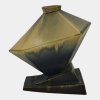

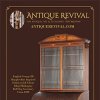


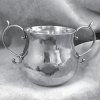










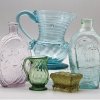




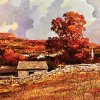






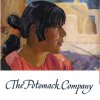
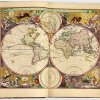


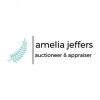

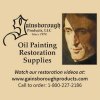


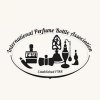

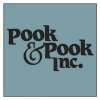






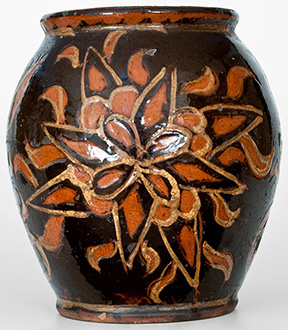 Here is a rare slip-decorated and sgraffito-decorated ovoid redware jar, dated 1820, attributed to Solomon Grimm of Rockland Township, Berks County, Pennsylvania. The underside of the jar is incised “No. 9.” The star, tulip, and heart designs are indicative of the work of potter Solomon Grimm, active 1815-25. Grimm’s work is among the most sought after of early Pennsylvania German redware. Examples of his pottery can be found at the Reading Public Museum, the Metropolitan Museum of Art, and the American Folk Art Museum. One factor of significance with this 7" high jar was its condition. There were just small spots of glaze loss and a faint hairline at the base along with wear to the rim. It represents a rare survivor. The jar sold for $39,100 (est. $15,000/25,000) to a private collector, underbid by another private collector. A comparable jar sold for $37,920 on November 11, 2011, at Pook & Pook at the Lester and Barbara Breininger sale. It was dated 1816 and had a large crack, possibly repaired. That jar sold to a New Jersey collector.
Here is a rare slip-decorated and sgraffito-decorated ovoid redware jar, dated 1820, attributed to Solomon Grimm of Rockland Township, Berks County, Pennsylvania. The underside of the jar is incised “No. 9.” The star, tulip, and heart designs are indicative of the work of potter Solomon Grimm, active 1815-25. Grimm’s work is among the most sought after of early Pennsylvania German redware. Examples of his pottery can be found at the Reading Public Museum, the Metropolitan Museum of Art, and the American Folk Art Museum. One factor of significance with this 7" high jar was its condition. There were just small spots of glaze loss and a faint hairline at the base along with wear to the rim. It represents a rare survivor. The jar sold for $39,100 (est. $15,000/25,000) to a private collector, underbid by another private collector. A comparable jar sold for $37,920 on November 11, 2011, at Pook & Pook at the Lester and Barbara Breininger sale. It was dated 1816 and had a large crack, possibly repaired. That jar sold to a New Jersey collector. A two-gallon stoneware jug, stamped “M. & T. MILLER / NEWPORT, PA,” with decoration consisting of a cluster of eight grapes, excited the regional collectors of M. & T. Miller stoneware of Perry County, Pennsylvania. A collector from Perry County paid $33,350 (est. $5000/7000). The underbidder was another Perry County collector. The underbidder bought a rare M. & T. Miller birdhouse with a profile head bust for $71,500 on November 4, 2006, at Crocker Farm.
A two-gallon stoneware jug, stamped “M. & T. MILLER / NEWPORT, PA,” with decoration consisting of a cluster of eight grapes, excited the regional collectors of M. & T. Miller stoneware of Perry County, Pennsylvania. A collector from Perry County paid $33,350 (est. $5000/7000). The underbidder was another Perry County collector. The underbidder bought a rare M. & T. Miller birdhouse with a profile head bust for $71,500 on November 4, 2006, at Crocker Farm. “It is a record for any Anna pottery,” noted Tony Zipp concerning this stoneware temperance centennial jug with snake decoration that sold for $87,400 (est. $30,000/50,000). Consigned by a private midwestern collector, it was purchased by the Leeds Art Foundation, which independently works with museums in many areas, including scholarship, exhibition loans, and conservation.
“It is a record for any Anna pottery,” noted Tony Zipp concerning this stoneware temperance centennial jug with snake decoration that sold for $87,400 (est. $30,000/50,000). Consigned by a private midwestern collector, it was purchased by the Leeds Art Foundation, which independently works with museums in many areas, including scholarship, exhibition loans, and conservation. This rare stoneware teapot with bird decoration sold for $29,900 (est. $5000/7000). It was attributed to Thomas Warne and Joshua Letts of South Amboy, New Jersey. An early survivor in very good condition, it had been purchased by the consignor at an antiques show in Pennsylvania roughly 40 years ago. The buyer at Crocker Farm was a private collector bidding on the phone.
This rare stoneware teapot with bird decoration sold for $29,900 (est. $5000/7000). It was attributed to Thomas Warne and Joshua Letts of South Amboy, New Jersey. An early survivor in very good condition, it had been purchased by the consignor at an antiques show in Pennsylvania roughly 40 years ago. The buyer at Crocker Farm was a private collector bidding on the phone. One of the rarest items in the sale was this Trenton, New Jersey, oblong redware platter with manganese oyster shell and star designs. It was stamped three times “J. McCULLY / TRENTON” and measures 19¾" long x 12½" wide. The platter’s $1000/2000 estimate was ignored, and it sold for $20,700 to dealer and collector J. Garrison “Gary” Stradling in the salesroom. It is believed that the decoration was applied with a feather. The consignor had bought it between 20 and 30 years ago.
One of the rarest items in the sale was this Trenton, New Jersey, oblong redware platter with manganese oyster shell and star designs. It was stamped three times “J. McCULLY / TRENTON” and measures 19¾" long x 12½" wide. The platter’s $1000/2000 estimate was ignored, and it sold for $20,700 to dealer and collector J. Garrison “Gary” Stradling in the salesroom. It is believed that the decoration was applied with a feather. The consignor had bought it between 20 and 30 years ago.




